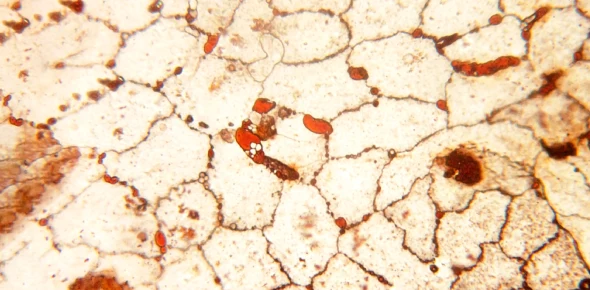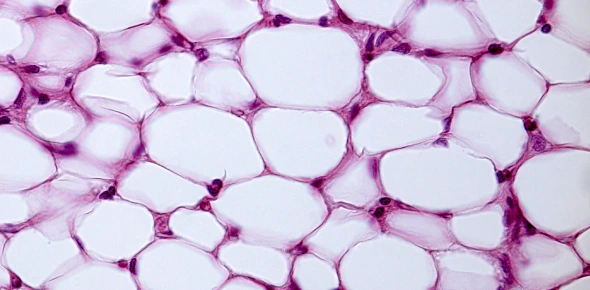Could You Recognize These Body Tissues? Trivia Quiz

Get ready for an informative journey through the intricacies of human anatomy with our Body Tissues Identification Quiz. Designed to challenge and educate, this quiz offers a deep dive into the fascinating world of body tissues, covering everything from the delicate interweavings of connective tissues to the dynamic complexities of muscular and nervous tissues. Whether you're a budding biologist, a curious student, or simply fascinated by the human body, this quiz provides a comprehensive overview of the fundamental building blocks that compose our very essence.
Could You Recognize These Body Tissues in this trivia quiz? There are four main tissues Read morein the human body and each of them is made up of special cells that help them meet their functions. How much do you know about the said functions and the relevant organs attached to each tissue? Get to refresh your memory now!
Body Tissues Identification Questions and Answers
- 1.
What is this tissue?
- A.
Stratified squamous
- B.
Simple cuboidal
- C.
Simple columnar
Correct Answer
A. Stratified squamousExplanation
Stratified squamous epithelium is a multi-layered tissue characterized by flat, scale-like surface cells, designed to protect areas of the body subject to abrasion. Found in the skin, mouth, esophagus, and parts of the reproductive system, its primary role is to shield underlying tissues from mechanical damage, pathogens, and dehydration.Rate this question:
-
- 2.
What is this tissue?
- A.
Cardiac muscle
- B.
Bone
- C.
Skeletal muscle
Correct Answer
C. Skeletal muscleExplanation
Skeletal muscle is a type of striated muscle tissue that is attached to bones and is responsible for voluntary movements of the body. Characterized by its long, cylindrical fibers, skeletal muscle is under conscious control, enabling actions ranging from walking and running to facial expressions. These muscle fibers are multinucleated, meaning they contain multiple nuclei, and exhibit a distinctive pattern of light and dark bands (striations) when viewed under a microscope, due to the precise alignment of their contractile proteins, actin and myosin.Rate this question:
-
- 3.
What is this tissue?
- A.
Stratified squamous
- B.
Simple columnar
- C.
Simple squamous
Correct Answer
C. Simple squamousExplanation
Simple squamous epithelium is a single layer of flat, scale-like cells that form a thin and smooth lining across various surfaces and cavities within the body. This tissue type is specialized for functions involving rapid diffusion, filtration, and some secretion, making it integral to the efficient exchange of gases and nutrients, as well as the movement of fluids across membranous barriers.Rate this question:
-
- 4.
What is this tissue?
- A.
Stratified columnar
- B.
Simple columnar
- C.
Adipose
Correct Answer
B. Simple columnarExplanation
The simple columnar epithelium consists of a single layer of tall, narrow cells aligned in a row, distinguished by their height and the placement of their nuclei, which are typically positioned near the base of each cell. This type of epithelial tissue is primarily found lining the digestive tract—from the stomach to the rectum—as well as in the ducts of certain glands and the uterus.Rate this question:
-
- 5.
What is this tissue?
- A.
Simple cuboidal
- B.
Neuron
- C.
Corn silk
Correct Answer
B. NeuronExplanation
A neuron, or nerve cell, is the fundamental unit of the nervous system, specialized for the task of transmitting information throughout the body. These cells are unique in their structure and function, designed to rapidly send and receive signals, thereby playing a critical role in controlling bodily functions, from basic muscle contractions to complex cognitive processes.Rate this question:
-
- 6.
What is this tissue?
- A.
Fibrous connective tissue
- B.
Cardiac muscle
- C.
Skeletal muscle
Correct Answer
A. Fibrous connective tissueExplanation
Fibrous connective tissue, also known as dense connective tissue, is a type of connective tissue characterized by a high density of collagen fibers, giving it remarkable strength and durability. This tissue type is primarily composed of fibroblasts (cells that produce and maintain the connective tissue fibers) and a matrix of collagen fibers that are closely packed together.Rate this question:
-
- 7.
What is this tissue?
- A.
Cartilage
- B.
Adipose
- C.
Simple cuboidal
Correct Answer
A. CartilageExplanation
Cartilage is a resilient and smooth elastic tissue, a rubber-like padding that covers and protects the ends of long bones at the joints, and is a structural component of the rib cage, the ear, the nose, the bronchial tubes, the intervertebral discs, and many other body components. Unlike other connective tissues, cartilage lacks blood vessels and nerves, with the cells being supplied by diffusion; hence, its repair capabilities are limited.Rate this question:
-
- 8.
What is this tissue?
- A.
Cartilage
- B.
Skeletal muscle
- C.
Cardiac muscle
Correct Answer
C. Cardiac muscleExplanation
Cardiac muscle, also known as myocardium, is a specialized type of muscle found exclusively in the heart. Its primary function is to contract and relax rhythmically throughout an individual's life, pumping blood throughout the body via the circulatory system. Unlike skeletal muscle, which can be voluntarily controlled, cardiac muscle operates involuntarily, meaning its activity is not consciously directed.Rate this question:
-
- 9.
What is this tissue?
- A.
Blood
- B.
Bone
- C.
Simple squamous
Correct Answer
B. BoneExplanation
Bone is a hard, dense connective tissue that forms the structural framework of the vertebrate skeleton. It serves multiple critical functions, including providing support and shape to the body, facilitating movement by serving as attachment points for muscles, protecting vital organs, and housing bone marrow, where blood cells are produced.Rate this question:
-
- 10.
What is this tissue?
- A.
Skeletal muscle
- B.
Cartilage
- C.
Blood
Correct Answer
C. BloodExplanation
Blood is a vital fluid in the human body that performs essential functions to sustain life. It is a specialized bodily fluid that supplies necessary substances such as nutrients and oxygen to the cells and transports metabolic waste products away from those same cells.Rate this question:
-
- 11.
What is this tissue?
- A.
Stratified columnar
- B.
Simple cuboidal
- C.
Simple squamous
Correct Answer
B. Simple cuboidalExplanation
Simple cuboidal epithelium consists of a single layer of cells that are roughly cube-shaped and have centrally located nuclei. These cells are found lining the surfaces of ducts, glands, and tubules throughout the body, providing a specialized function in absorption, secretion, and excretion. The uniform shape and arrangement of these cells allow for efficient transport of materials into and out of the cells, making them integral to the proper functioning of many organs.Rate this question:
-
- 12.
What is this tissue?
- A.
Adipose
- B.
Simple cuboidal
- C.
Stratified squamous
Correct Answer
A. Adipose -
Quiz Review Timeline +
Our quizzes are rigorously reviewed, monitored and continuously updated by our expert board to maintain accuracy, relevance, and timeliness.
-
Current Version
-
Apr 04, 2024Quiz Edited by
ProProfs Editorial Team
Expert Reviewed by
Stephen Reinbold -
Feb 11, 2019Quiz Created by
Mr. Holliday
 Back to top
Back to top



.jpg)
(42).jpg)

(50).jpg)
(51).jpg)
(47).jpg)
(54).jpg)
(48).jpg)
(53).jpg)
(42).jpg)
(44).jpg)
